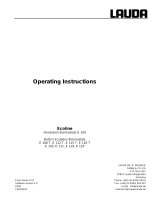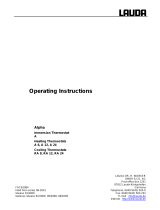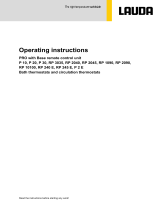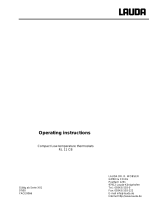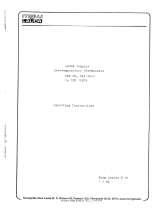II
1 BRIEF OPERATING INSTRUCTIONS...........................................................................................1
2 CONTROL AND FUNCTIONAL ELEMENTS.................................................................................3
3 UNIT DESCRIPTION .....................................................................................................................4
3.1 Unit types ...............................................................................................................................4
3.2 Pumps.....................................................................................................................................4
3.3 Temperature indication, control, and safety circuit ............................................................4
3.4 Programmer (Types RE 3xx only).........................................................................................5
3.5 Materials.................................................................................................................................5
3.6 Refrigeration system .............................................................................................................5
3.7 Serial Interfaces RS 232, RS 485...........................................................................................6
3.7.1 Specification and interface test.........................................................................................................6
3.7.2 General information............................................................................................................................7
3.7.3 Output commands..............................................................................................................................8
3.7.4 Data request from the thermostat.....................................................................................................9
3.7.5 Error messages.................................................................................................................................10
4 UNPACKING ...............................................................................................................................11
5 PREPARATIONS.........................................................................................................................12
5.1 Assembly and setting up.....................................................................................................12
5.2 Filling and emptying............................................................................................................13
5.3 Bath liquids and hose connections....................................................................................15
5.4 Connection of external circuits...........................................................................................17
6 STARTING UP.............................................................................................................................19
6.1 Connection to the supply....................................................................................................19
6.2 Switching on ........................................................................................................................19
6.3 Setpoint selection
(level 0)
..................................................................................................20
6.4 Menu functions ....................................................................................................................21
6.4.1 Refrigeration system
(level 1)
..........................................................................................................21
6.4.2 Pump output......................................................................................................................................22
6.4.3 Setting the setpoint resolution........................................................................................................23
6.4.4 Programmer (Types RE 3xx only)...................................................................................................24
6.4.4.1 Programme example....................................................................................................................24





















